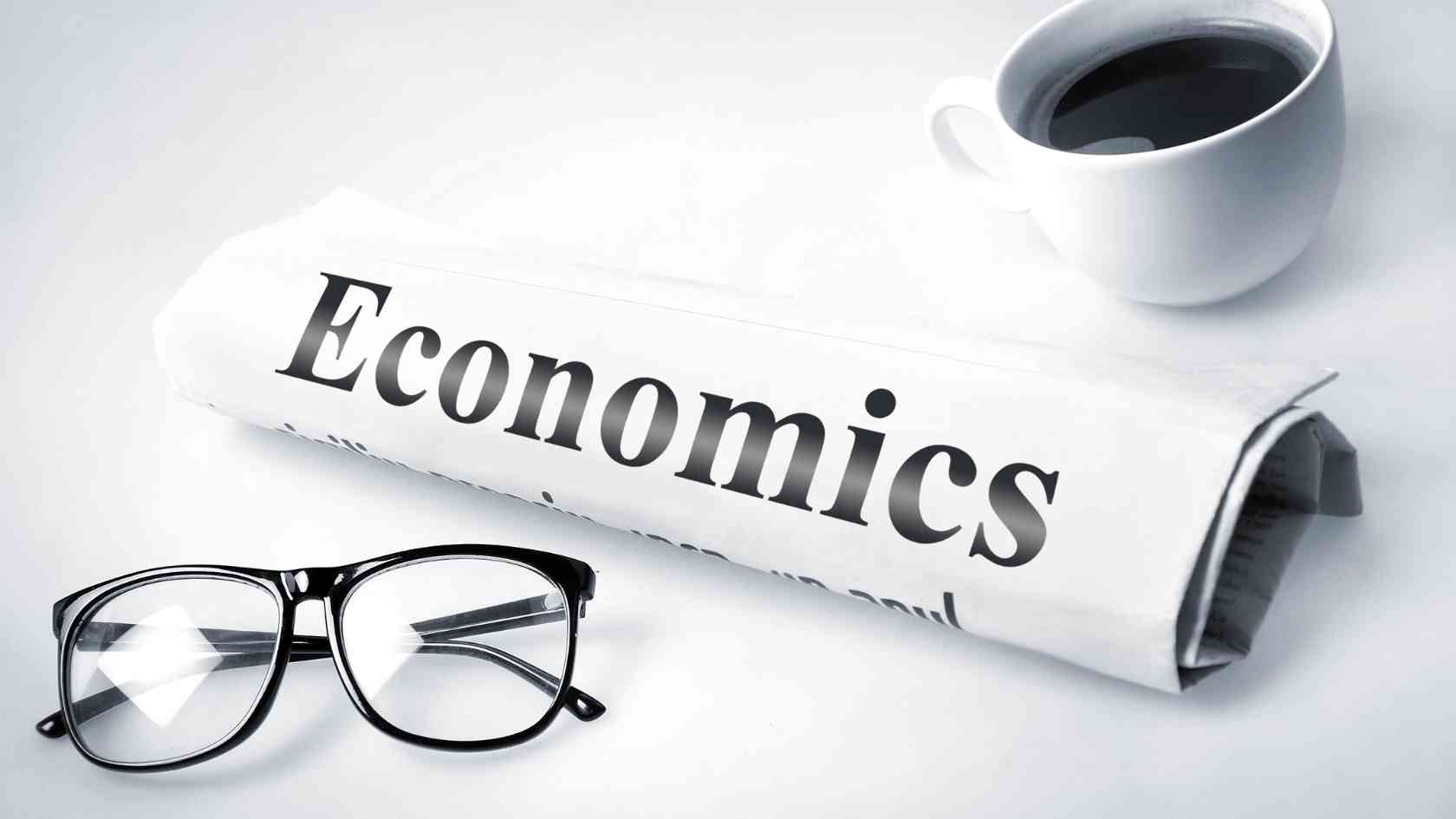Macroeconomics is a branch of economics that studies the behavior of an entire economy, rather than individual markets or firms. It focuses on broad issues such as inflation, unemployment, economic growth, and international trade. Macroeconomics is concerned with understanding how these factors interact and affect an economy’s overall performance.
Meaning The Nature of Macroeconomics
The nature of macroeconomics refers to the study of economic phenomena at a broader level, focusing on aggregates like national income, employment, inflation, and economic growth. It examines the overall performance and behavior of an economy as a whole rather than individual markets or sectors.
Macroeconomics seeks to understand the causes and consequences of fluctuations in key economic indicators and aims to develop policies to achieve macroeconomic goals such as stable prices, full employment, and sustainable economic growth. It also delves into topics such as fiscal policy, monetary policy, international trade, and globalization, providing insights into how these factors influence the functioning of economies on a large scale.

Meaning The Scope of Macroeconomics
The scope of macroeconomics encompasses the range of topics and issues that fall within the purview of the study of the economy at a broader level. This includes analyzing aggregate economic variables such as national income, unemployment rates, inflation, and economic growth.
Additionally, macroeconomics examines the factors influencing these variables, such as government policies, monetary systems, international trade, and global economic trends. The scope of macroeconomics also extends to understanding how various economic agents, including households, firms, and governments, interact within the economy to affect its overall performance.
Overall, the scope of macroeconomics covers a wide array of topics relevant to understanding and managing the functioning of economies on a large scale.
Macroeconomics, a branch of economics, deals with the study of the economy as a whole. It focuses on the behavior, structure, and performance of an economy on a large scale. In this article, we’ll delve into the scope of macroeconomics, exploring its various aspects and significance in understanding the functioning of economies.
The Scope of Macroeconomics includes the following areas:
a) Theory of Income and Employment
b) Theory of Money and Price Level
c) Theory of Economics Growth
d) Macroeconomic policies
Fundamentals of Macroeconomics
Macroeconomics examines the behavior and performance of entire economies. It delves into key indicators like national income, inflation, unemployment, and economic growth to gauge overall economic health. Gross Domestic Product (GDP) serves as a vital measure, reflecting the total value of goods and services produced within a country’s borders over a specific timeframe. Inflation, the rate at which prices rise, erodes purchasing power, while unemployment, indicating joblessness among those actively seeking work, is a critical economic metric.
Governments wield fiscal and monetary policies to influence economies. Fiscal policy involves adjusting government spending and taxation levels to stimulate or cool economic activity, while monetary policy entails managing interest rates and money supply to achieve economic goals. The interplay of aggregate demand (total demand for goods and services) and aggregate supply (total quantity producers are willing to supply) determines economic equilibrium, impacting output and prices.

Economic growth, measured by the increase in production over time, is a central concern. Understanding these macroeconomic fundamentals is crucial for analyzing economies, predicting trends, and crafting effective policies to address economic challenges.
1. Aggregate Demand and Supply
Understanding the dynamics of aggregate demand and supply is fundamental to macroeconomics. It involves analyzing the total demand for goods and services in an economy and the total supply of goods and services produced.
2. National Income Accounting
Macroeconomics encompasses the measurement and analysis of a nation’s total economic activity through national income accounting. This includes calculating gross domestic product (GDP), gross national product (GNP), and other key indicators to assess the overall economic performance.
3. Inflation and Deflation
Another crucial aspect of macroeconomics is studying inflation and deflation, which are the sustained increases or decreases in the general price level of goods and services over time. Macroeconomists analyze the causes, effects, and management of inflation and deflationary pressures on an economy.
4. Unemployment
Macroeconomics also focuses on understanding unemployment and its implications for the economy. This involves studying the various types of unemployment, such as frictional, structural, and cyclical, and evaluating policies to reduce unemployment rates.

Policy Implications
1. Fiscal Policy
Macroeconomics plays a significant role in shaping fiscal policy, which involves government taxation and spending to influence the economy. Macroeconomists analyze the impact of fiscal policies on aggregate demand, employment, and economic growth.
2. Monetary Policy
Monetary policy, managed by central banks, is another area within the scope of macroeconomics. It involves regulating the money supply, interest rates, and credit conditions to achieve economic objectives such as price stability, full employment, and sustainable growth.
International Economics
1. Exchange Rates
Macroeconomics extends to the study of international economics, including exchange rates and their impact on trade and investment flows between countries. Understanding exchange rate dynamics is crucial for analyzing global economic interactions.
2. Balance of Payments
The balance of payments, which records a country’s transactions with the rest of the world, is another aspect covered by macroeconomics. Macroeconomists analyze the components of the balance of payments, such as exports, imports, and capital flows, to assess a country’s economic health.
Conclusion
In conclusion, the scope of macroeconomics is vast and encompasses various aspects of the economy, including aggregate demand and supply, national income accounting, inflation, unemployment, fiscal and monetary policy, international economics, and more. By studying these factors, macroeconomists gain insights into how economies function and develop policies to promote stable and sustainable economic growth.
Some Sources:
https://www.investopedia.com/terms/m/macroeconomics.asp
FAQs
1. What distinguishes macroeconomics from microeconomics?
Macroeconomics focuses on the economy as a whole, analyzing aggregate phenomena such as inflation, unemployment, and economic growth, whereas microeconomics examines individual economic units such as households, firms, and industries.
2. How does macroeconomics influence government policies?
Macroeconomics provides policymakers with insights into the performance and behavior of the economy, guiding decisions on fiscal and monetary policies aimed at achieving economic stability and growth.
3. Why is GDP an important indicator in macroeconomics?
Gross Domestic Product (GDP) measures the total value of goods and services produced in an economy, serving as a key indicator of its economic performance and standard of living.
4. How does international trade affect macroeconomics?
International trade impacts macroeconomics through its effects on exchange rates, trade balances, and economic interdependence between countries, influencing factors such as employment, inflation, and economic growth.
5. What are the limitations of macroeconomics?
Macroeconomics faces challenges such as data limitations, complexity in modeling economic systems, and the difficulty of accurately predicting economic outcomes due to the dynamic nature of economic
6. How does government intervention impact macroeconomic outcomes?
Government intervention, through fiscal and monetary policies, can influence aggregate demand, inflation, and employment levels. However, the effectiveness of such interventions depends on various factors such as the state of the economy and policy implementation.
7. What role do central banks play in macroeconomic stability?
Central banks are responsible for implementing monetary policy to achieve objectives such as price stability and full employment. They regulate the money supply, set interest rates, and intervene in financial markets to maintain macroeconomic stability.
8. How does globalization affect macroeconomic trends?
Globalization, characterized by increased trade, capital flows, and interconnectedness between economies, has profound effects on macroeconomic variables such as exchange rates, economic growth, and income distribution. It can lead to both opportunities and challenges for countries participating in the global economy.
9. What is the Phillips Curve and its significance in macroeconomics?
The Phillips Curve illustrates the relationship between inflation and unemployment, suggesting an inverse relationship between the two. Understanding the Phillips Curve helps policymakers navigate the trade-offs between inflation and unemployment when formulating economic policies.
10. How do economic shocks impact macroeconomic equilibrium?
Economic shocks, such as financial crises or natural disasters, can disrupt macroeconomic equilibrium by affecting aggregate demand, supply, and other economic variables. Macroeconomists study the transmission mechanisms of shocks and assess their implications for economic stability and policy responses.

